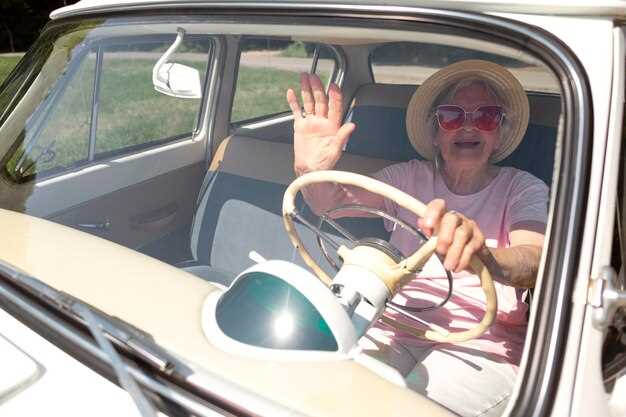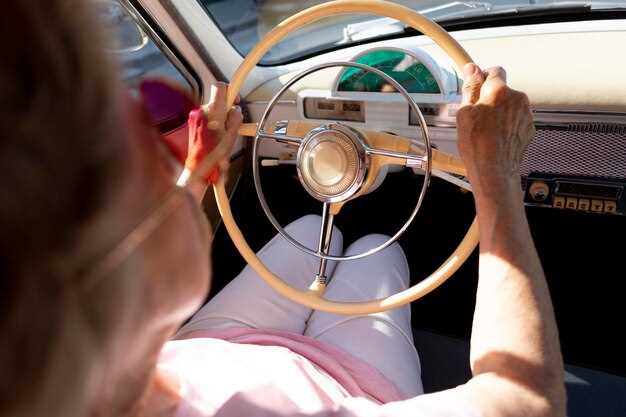
In the world of automotive enthusiasts, vintage vehicles hold a unique place due to their rich history and timeless design. However, one aspect that often lacks in these classic cars is their handling performance, which can significantly impact the driving experience. While a vintage car may exude charm and nostalgia, its handling capabilities may fall short compared to modern standards. Therefore, enhancing the handling of these iconic vehicles is essential for improving both safety and enjoyment on the road.
The primary goal of enhancing handling performance for vintage vehicles is to achieve a balance between maintaining the original character and improving stability and responsiveness. Handling performance can be impacted by various factors, including suspension design, tire selection, and weight distribution. By focusing on these crucial elements, enthusiasts can breathe new life into their beloved classics, making them more enjoyable to drive without compromising their aesthetic appeal.
Modern technologies and techniques offer a wealth of opportunities for upgrading vintage vehicles. From advanced suspension systems to high-performance tire choices, there are numerous ways to enhance handling. Additionally, incremental modifications can be made to the chassis and drivetrain to optimize weight distribution and improve cornering ability. This article will explore various methods and best practices for vintage car owners looking to elevate their vehicles’ handling performance, ensuring a thrilling yet safe ride on both city streets and winding country roads.
Upgrading Suspension Components for Improved Ride Quality

Upgrading the suspension components of vintage vehicles plays a vital role in enhancing ride quality and overall handling performance. Original suspensions were often designed with materials and technologies that may not meet contemporary expectations for comfort and stability. By investing in modern suspension upgrades, owners can significantly improve their driving experience.
One of the most effective upgrades is the replacement of original shock absorbers with advanced gas-charged units. These modern shocks provide superior damping capabilities, improving the vehicle’s ability to absorb bumps and road irregularities. This results in a smoother ride and better tire contact with the road surface, translating into improved traction and control during cornering.
Additionally, swapping out worn-out springs with performance coil springs can enhance ride height and responsiveness. Coil springs made from high-tensile steel offer better resistance to sagging and can be tailored to suit specific driving preferences, whether for daily driving or spirited performance driving. This customization allows for improved weight distribution and balance, further enhancing overall handling.
Upgrading bushings is another crucial component of suspension enhancement. By replacing old, deteriorated rubber bushings with polyurethane or modern materials, drivers can reduce unwanted flex and improve suspension geometry. This leads to more precise steering responses and a more connected feel to the road, making the vehicle more predictable and enjoyable to drive.
Lastly, incorporating adjustable suspension components such as sway bars or strut braces enables fine-tuning of the vehicle’s handling characteristics. These components can minimize body roll and improve stability during cornering, providing drivers with the confidence to push their vintage vehicles to new limits.
In summary, investing in upgraded suspension components for vintage vehicles can dramatically elevate ride quality and handling. Through the implementation of modern shocks, springs, bushings, and adjustable features, owners can revitalize their classic rides, ensuring a comfortable and engaging driving experience that rivals modern vehicles.
Tuning Alignment Settings for Optimal Handling Dynamics
The alignment settings of a vehicle’s suspension system play a crucial role in its handling characteristics. For vintage vehicles, which often have outdated design parameters, fine-tuning these settings can significantly enhance performance and driving enjoyment. The three primary alignment angles to focus on are camber, caster, and toe.
Camber refers to the angle of the wheels in relation to the vertical axis when viewed from the front. A negative camber angle can improve cornering grip, as it allows the tire to maintain better contact with the road during turns. However, excessive negative camber can lead to uneven tire wear. For vintage vehicles, a slight negative camber, typically between -0.5 to -1.5 degrees, can optimize handling without compromising tire longevity.
Caster angle affects the steering characteristics and stability of a vehicle. A greater positive caster angle enhances straight-line tracking and high-speed stability, making it essential for vintage cars that may have been designed with lower caster settings. Adjusting the caster angle to around 4 to 6 degrees can provide a more responsive steering feel while improving overall stability during driving.
The toe setting is the angle at which the wheels point inward or outward when viewed from above. A slight toe-in can enhance straight-line stability, while toe-out can improve responsiveness during cornering. For vintage vehicles, a minimal toe-in of about 1/16 inch can balance stability and agility, providing a confident driving experience without sacrificing maneuverability.
Ultimately, achieving optimal handling dynamics in vintage vehicles requires a comprehensive approach to alignment tuning. By carefully adjusting camber, caster, and toe settings, drivers can enhance stability, improve tire wear, and enjoy a more engaging driving experience. Regular monitoring and fine-tuning of these alignment settings are essential to maintain the desired performance as suspension components age and wear over time.
Implementing Tire Options for Better Grip and Stability

The choice of tires plays a crucial role in enhancing the handling performance of vintage vehicles. Selecting the right tire type can significantly improve grip, stability, and overall driving experience. Vintage cars often come with outdated tire technology, which may not offer the necessary traction for modern driving conditions. To address this, manufacturers now provide specialized tires designed to meet both aesthetic and performance needs.
One effective option is to upgrade to tires that utilize advanced rubber compounds. These compounds can improve grip on both wet and dry surfaces, thus enhancing the vehicle’s handling capabilities. Tires with a softer compound generally yield better traction, allowing the vehicle to navigate corners with increased confidence and reduced slip.
In addition to compound selection, tread design is a critical factor in tire performance. Wide, performance-oriented tread patterns can help channel water away from the contact patch, reducing hydroplaning risks and improving stability during wet driving conditions. Vintage vehicles can benefit from modern tread designs that incorporate features like asymmetrical patterns, which provide better cornering ability and balance.
Moreover, opting for wider tires can also contribute to enhanced stability. A larger contact patch improves grip, allowing for better handling during acceleration and braking. However, it is essential to ensure that the tire width is compatible with the vehicle’s suspension and body dimensions to avoid any adverse effects on steering response.
Additionally, it’s advisable to consider the tire pressure as an integral part of optimizing handling. Maintaining the recommended pressure ensures proper contact with the road and avoids uneven wear, which can compromise handling performance. Regular monitoring and adjustment of tire pressure can lead to noticeable improvements in vehicle stability and responsiveness.
Ultimately, implementing the right tire options tailored for vintage vehicles can transform the driving experience. Enhanced grip and stability not only improve handling but also ensure greater safety on the road. Investing in quality tires specifically engineered to meet the demands of vintage driving is key to achieving optimal performance.


